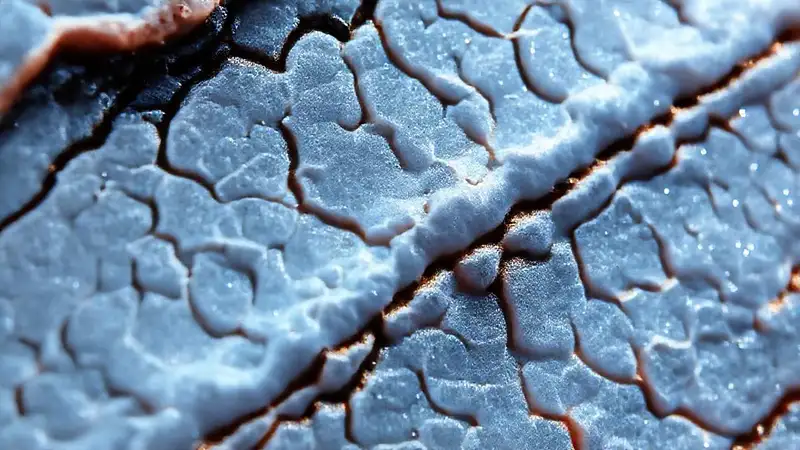The study of dinosaurs has always been a complex endeavor, relying heavily on fossilized remains which offer only fragmented glimpses of these magnificent creatures. One of the biggest challenges paleontologists face is reconstructing the appearance and function of dinosaur skin – was it covered in smooth scales, elaborate feathers, or perhaps a combination of both? Understanding the nature of dinosaur skin is critical to understanding their behavior, thermoregulation, and ultimately, their evolutionary success. Recent advances in microscopic analysis of fossil skin impressions and trackways have started to provide tantalizing clues, and a particular feature – the epidermal ridges – is proving to be a surprisingly important piece of the puzzle.
The investigation into dinosaur skin is pushing the boundaries of our understanding of paleoecology. New techniques combined with novel interpretations of existing data are constantly reshaping our models of dinosaur life. Successfully interpreting fossil evidence requires not just meticulous observation but also a willingness to challenge established assumptions, and the study of epidermal ridges offers a particularly fertile ground for such reevaluation. Furthermore, understanding how these structures interacted with potential integumentary coverings – scales and feathers – is key to resolving the “feathered or scaly?” debate.
The Scale Hypothesis: A Traditional View
For decades, the prevailing view among paleontologists was that most dinosaurs, particularly larger ones, were covered in scales. This “scale hypothesis” was supported by the abundance of fossilized scales and the impression of robust, reptilian skin on many dinosaur skeletons. Early work suggested that scales were primarily protective, shielding the dinosaur from abrasion, predation, and extreme temperatures. Researchers posited that varying scale sizes and patterns could have played a role in camouflage, aiding dinosaurs in blending into their environments.
However, as analytical techniques improved, it became increasingly clear that the fossil record presented a more nuanced picture than a uniformly scaled world. Not all dinosaurs possessed scales; many smaller theropods, such as Velociraptor, exhibited evidence of filamentous structures, hinting at the presence of feathers. The simple assumption of a uniformly scaled body was slowly being eroded by accumulating evidence of more complex integumentary systems. The question then became: what was the functional role of those structures that were present?
Feathered Dinosaurs: Evidence Mounting
The discovery of feathered dinosaurs, primarily in China, dramatically shifted the focus of research. Fossils like Sinosauropteryx and Microraptor showed clear evidence of pennaceous feathers – the kind found in modern birds – and later discoveries revealed simpler, filament-like feathers on a broader range of theropods. These feathers weren't necessarily for flight; they likely served a variety of purposes, including insulation, display, and potentially even rudimentary gliding.
The initial surprise was the sheer diversity of feather types. Researchers now recognize that feathers weren't a monolithic feature, but rather evolved along multiple pathways, leading to a wide range of morphologies. The presence of feathers in non-avian theropods suggests that the ancestral condition might have been covered in filamentous proto-feathers, which then gradually evolved into more complex structures. The debate continues, but the evidence for feathered dinosaurs is now overwhelming and undeniably important to our understanding of dinosaur evolution.
Epidermal Ridges – Tiny Windows into the Past

The discovery of epidermal ridges – microscopic grooves and bumps on the skin surface – has revolutionized our understanding of dinosaur integument. These ridges, found in fossilized skin impressions from various dinosaur species, provide valuable information about the texture and structure of the underlying skin, regardless of whether it was covered in scales or feathers. They act as templates, dictating the shape and arrangement of scales or feathers.
Specifically, the patterns of ridges reveal how scales or feathers were attached to the skin. The size, spacing, and orientation of these ridges can be used to reconstruct the type and density of integumentary covering. Furthermore, analysis of ridge morphology has provided insights into the mechanical properties of dinosaur skin – how strong and flexible it was – and how that might have influenced its function. They're not just passive features; they’re dynamic indicators of skin structure.
Combining Evidence: Scales, Feathers, and Ridges
Integrating the evidence from fossil skin impressions, feather fossils, and microscopic analysis of epidermal ridges is crucial for a complete picture of dinosaur appearance. It’s becoming increasingly apparent that many dinosaurs likely had a combination of scales and feathers, with the distribution and abundance of each varying depending on species, location, and potentially even individual age. The ridges themselves provide a way to determine the relative contribution of scales versus feathers.
Sophisticated computer modeling, using ridge data to simulate skin texture, is now being used to create realistic reconstructions of dinosaur integument. This allows scientists to visualize how dinosaur skin might have looked and functioned, offering a more engaging and scientifically informed approach to paleontology. Ultimately, a holistic approach combining multiple lines of evidence – including the subtle details revealed by epidermal ridges – is the key to unlocking the secrets of dinosaur skin.
Conclusion
The study of dinosaur skin has transformed from a speculative endeavor into a rigorous scientific field thanks to advancements in technology and interdisciplinary collaboration. From the initial focus on scales to the rising prominence of feathered dinosaurs, our understanding has undergone a dramatic evolution. The rediscovery of the importance of epidermal ridges has cemented the role of these tiny structures as powerful indicators of skin texture and the integration of these findings with increasingly sophisticated techniques offers a radically new perspective on dinosaur morphology.
As we continue to uncover more fossil evidence and refine our analytical methods, we can anticipate even greater breakthroughs in the coming years. The quest to understand what these magnificent creatures truly looked like is far from over, and the secrets hidden within fossil skin – and the ridges that preserve their details – will undoubtedly continue to illuminate our knowledge of the age of dinosaurs.




Deja una respuesta